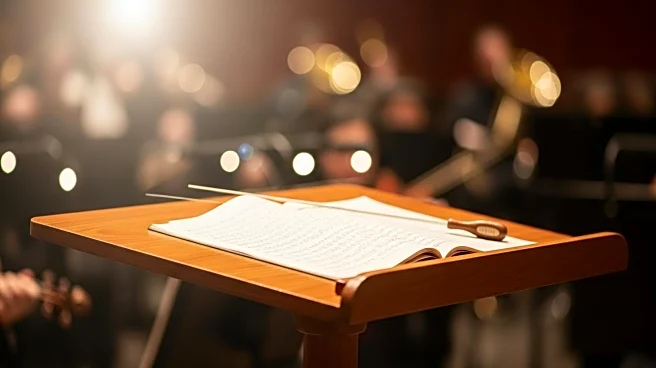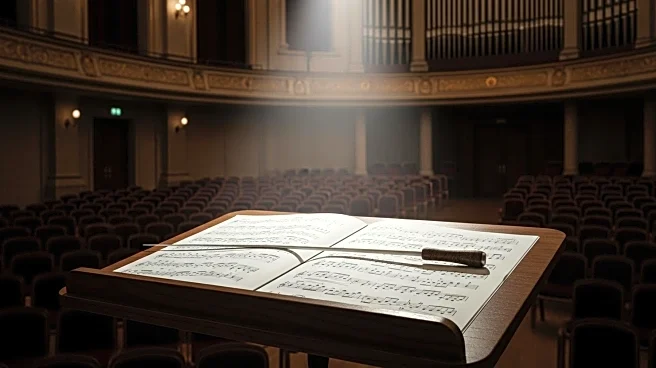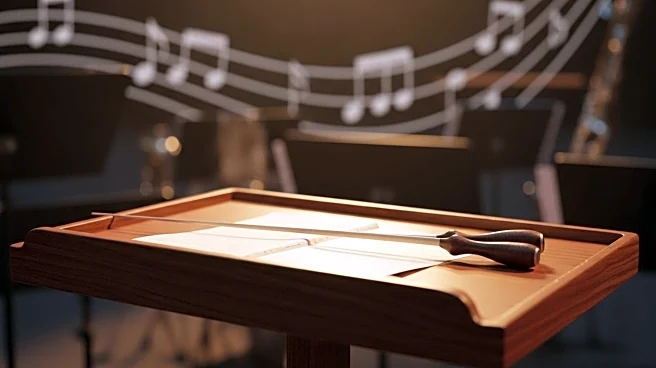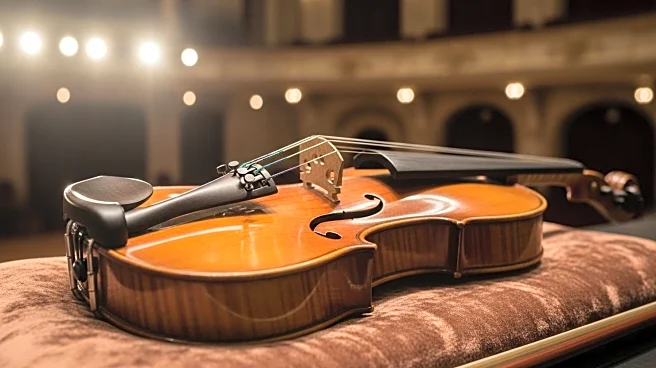What's Happening?
Peter Rubardt, the music director and conductor of the Pensacola Symphony Orchestra, is celebrating his 20th anniversary with the organization. Rubardt has been a pivotal figure in the symphony's development, leading numerous performances and events that have enriched the cultural landscape of Pensacola. His tenure has been marked by innovative programming and community engagement, including events like 'Symphony By The Sea' and 'Dinner with Strings Attached.' The symphony is set to kick off its 2025 season with the 'Beethoven in Blue Jeans' concert, continuing its tradition of accessible and engaging performances.
Why It's Important?
Rubardt's leadership has significantly contributed to the Pensacola Symphony Orchestra's reputation as a cultural cornerstone in the region. His commitment to community involvement and musical excellence has fostered a deeper appreciation for classical music among local audiences. The symphony's events, often held in collaboration with local organizations, have not only provided entertainment but also supported charitable causes, such as donations to Manna Food Pantries. This milestone anniversary highlights the enduring impact of Rubardt's work on the symphony and the broader community.
What's Next?
The Pensacola Symphony Orchestra is preparing for its upcoming season, starting with the 'Beethoven in Blue Jeans' concert on January 11, 2025. This event is expected to draw significant local interest, continuing the symphony's tradition of blending classical music with casual, approachable themes. As Rubardt continues to lead the orchestra, future performances are likely to maintain this balance of artistic integrity and community engagement, further solidifying the symphony's role in Pensacola's cultural scene.
Beyond the Headlines
Rubardt's anniversary not only marks a personal achievement but also reflects broader trends in the arts community, where long-term leadership can drive sustained growth and innovation. His approach to programming, which often includes educational components and collaborations, underscores the importance of making classical music accessible to diverse audiences. This strategy may serve as a model for other regional orchestras seeking to expand their reach and impact.












